
Guests
- Stephen KinzerNew York Times reporter and author of the book All the Shah’s Men: An American Coup and the Roots of Middle East Terror.
New York Times reporter Stephen Kinzer discusses how the U.S. overthrew the democratically elected government of Iran. Kinzer says, “I think it was the success of the Iran coup, and the Guatemalan one that followed 10 months later, that sent the U.S. government off on this direction of covert action and regime change.” [includes transcript]
Transcript
AMY GOODMAN: The apparent coup d’état in Haiti last weekend and the mysterious circumstances surrounding the removal of President Jean-Bertrand Aristide from the country evoke images of what can only be described as U.S.-orchestrated coups past. Today we’re going to look at two of these: the 1953 coup against the democratically elected leader of Iran, Mohammad Mosaddegh and the April 2002 attempted coup against Hugo Chávez in Venezuela. This week, I went to Chicago to speak at the Chicago Public Library. Afterwards, I met with Stephen Kinzer, author of the book All the Shah’s Men: An American Coup and the Roots of Middle East Terror. The New York Times reporter talked about the 1953 coup against the Iranian leader.
STEPHEN KINZER: The story of how the CIA overthrew the government of Iran in 1953 is really an object lesson in how easy it is for a rich and powerful country to throw a poor and weak country into chaos. The CIA sent one of its most adept operatives, Kermit Roosevelt, the grandson of President Theodore Roosevelt, to Iran with the mission of organizing the overthrow of the government.
One reason I was so interested in writing this book is that I’ve always asked myself: How do you go about overthrowing a government? What do you do? Suppose you’re sent to a country with that mission. What do you do on the first day? How do you start? Then what do you do? Well, now I know.
Kermit Roosevelt set about trying to create chaos in Iran. And he was able to do that very quickly by a series of means. The first thing he did was he started bribing members of Parliament and leaders of small political parties that were part of Mosaddegh’s political coalition. Pretty soon the public started to see the Mosaddegh’s coalition splitting apart and people denouncing him on the floor of Parliament.
The next thing Roosevelt did was to start bribing newspaper editors and owners and columnists and reporters. Within a couple of weeks, he had 80% of the newspapers in Tehran on his payroll, and they were grinding out every kind of lie attacking Mosaddegh.
The next thing Roosevelt did was to start bribing religious leaders. Soon, at Friday prayers, the mullahs were denouncing Mosaddegh as an atheist, an enemy of Islam. Roosevelt also bribed members of police units and low-ranking military officers to be ready with their units on the crucial day.
And in what I think was really his master stroke, he hired the leaders of a bunch of street gangs in Tehran, and he used them to help create the impression that the rule of law had totally disintegrated in Iran. He actually at one point hired a gang to run through the streets of Tehran, beating up any pedestrians they found, breaking shop windows, firing their guns into mosques, and yelling, “We love Mosaddegh and communism!” This would naturally turn any decent citizen against Mosaddegh. But Roosevelt didn’t stop there. He tired a second mob to attack that first mob, to give people the impression that there was no police presence and order had completely disintegrated.
So, within just a few weeks, this one agent, operating with a large sum of cash and a network of contacts in various elements of society, had taken what was a fairly stable country and thrown it into complete upheaval.
AMY GOODMAN: And then, can you talk about how the coup was actually carried out?
STEPHEN KINZER: The first coup that Roosevelt organized was scheduled to take place on August 15th of 1953. And on that night, an officer, who had been brought into the plot, was supposed to arrive at Prime Minister Mosaddegh’s home around midnight with an order signed by the shah firing him as prime minister. Now, they knew that Mosaddegh would refuse to accept this order, since in Iran, which was then a democracy, only Parliament had the right to hire and fire prime ministers. And when he resisted, he would be arrested. That was the plan. And the CIA had a general already designated to take over the next day as prime minister of Iran.
But what happened? Mosaddegh got wind of this plan. And when the officer arrived at Mosaddegh’s house at midnight, loyal officers stepped out of the shadows. And soon, the officer who was supposed to arrest Mosaddegh was himself under arrest. So now the coup had failed, and the shah, who had been waiting out the results at his resort near the Caspian, immediately fled the country. He went to Baghdad and then on to Rome, where he told people that he was going to be looking for work, since he obviously wouldn’t be able to go back to Iran.
Now, what neither he nor anyone else knew was that Kermit Roosevelt, despite being ordered by the CIA to come home, decided, “I can still do this. I can try again.” He was really a true-life James Bond. And on his own, he activated his mobs on the 19th of August, just four days later, in a second coup attempt. They rampaged through the streets by the tens of thousands. Many of them, I think, never even really understood that they were being paid by the CIA. They just knew that they had been given a good day’s wage to go out in the street and chant something. Many politicians whipped up the crowds during those days. Roosevelt had been spending $11,000 a week just to bribe members of the Iranian Parliament. There were only 90 members. And the average annual income in Iran at that time was about $500, so you can imagine what this sum must have meant.
At crucial moments, police and military units joined the crowd. They started storming government buildings. There were gunfights in front of important buildings. The crucial battle, the climactic battle, was actually in front of Prime Minister Mosaddegh’s house. It started around nightfall. There was heavy gunfire, including an artillery duel. About a hundred people were killed just in the battle for Mosaddegh’s house.
Toward the end, however, members of a military unit, whose leader Roosevelt had bribed, arrived with a column of tanks, and with that, Mosaddegh was no longer able to survive. By midnight on August the 19th, 1953, his house was in flames, and he had fled over the back garden wall to surrender himself a couple of days later. And the general, who the CIA had selected as the designated savior of Iran, was installed as prime minister.
Now, the shah was sitting in a restaurant in Rome imagining that his prospects in Iran were finished, when news correspondents burst in with cables from Tehran saying that a second coup had been attempted and it had succeeded, and that he was now being called upon to return to his throne. According to correspondents who were present, he went into a form of shock, and his color drained out of his face, and his hands started to shake. And when he could finally regain his composure, he said, “I knew it. They love me.”
He flew back to Tehran and, a couple of nights later, received Kermit Roosevelt on the last night that Roosevelt spent in Iran before returning to Washington. The two of them toasted each other with vodka, and the shah said, “I owe my throne to God, my people, my army and you.” And he was quite right, although he might have got the order a little mixed up.
AMY GOODMAN: We’re talking to Stephen Kinzer of The New York Times, who has written the book All the Shah’s Men: An American Coup and the Roots of Middle East Terror. And so, the shah was installed. And, very briefly, the effect of this coup?
STEPHEN KINZER: Kermit Roosevelt came back from his great triumph in Tehran and was brought to the Oval Office to brief President Eisenhower, Secretary of State Dulles and a few other members of the national security team in Washington. He later wrote about this moment. And he said, “As I looked over to Secretary of State Dulles, I could see he was intensely interested. He seemed to be grinning like a giant cat. My instinct told me he was planning.”
Sure enough, only a few weeks later, Kermit Roosevelt was called into his boss’s office and told, “You know, you did such a great job overthrowing that government in Iran. We’ve decided we don’t like the government down in Guatemala, and we’d like you to go down there and do the same thing again.”
Well, Kermit Roosevelt demurred, but someone else was found. And in less than a year after the democratic government of Iran was overthrown by the CIA, the CIA did the same thing in Guatemala.
Now, these two seemingly great successes, purchased with modest effort and relatively low cost, I think, really thrilled Secretary of State Dulles and his brother, Allen Dulles, the CIA director. Bear in mind, this was a time when the United States could not invade countries of which it disapproved, because of the Soviet Union. The Red Army was always a present threat. So here was a way that the U.S. could dispose of governments it didn’t like without invading.
I think it was the success of the Iran coup, and the Guatemala one that followed 10 months later, that sent the U.S. government off on this direction of covert action and regime change. The Iran coup was the first time the CIA ever overthrew a government. And Harry Truman never wanted the CIA to go in that direction. I even found a phrase in one of his diaries. He used the phrase “American Gestapo” to describe what he was afraid the CIA might become if it were allowed to run loose. So he never used it to overthrow governments. But the new administration that came in in January 1953 seized onto this tool, and that led us to our adventures in everyplace from Indonesia to Chile to Cuba to Vietnam to the Congo and, I think, grabbed our government, set it off on a certain direction, from which it’s still recovering.
AMY GOODMAN: Stephen Kinzer, New York Times reporter and author of the book All the Shah’s Men, describing what happened in 1953, the CIA-backed coup against the democratically elected leader of Iran.

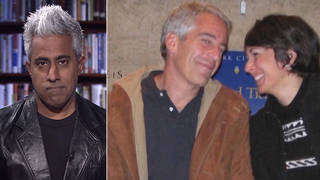
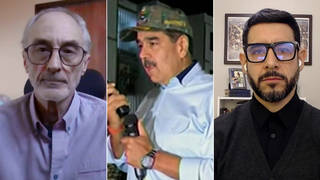
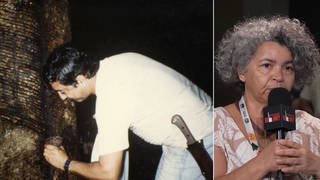
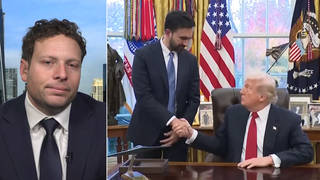





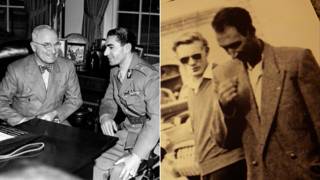
Media Options